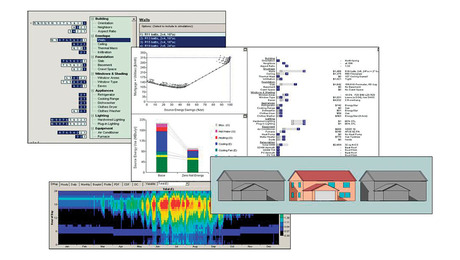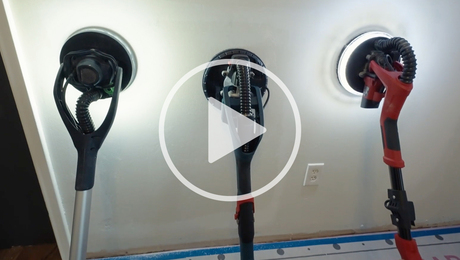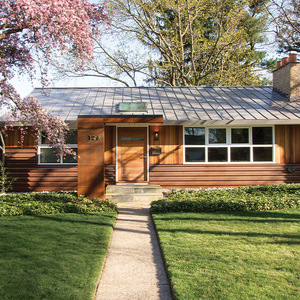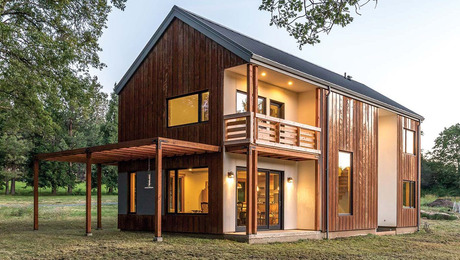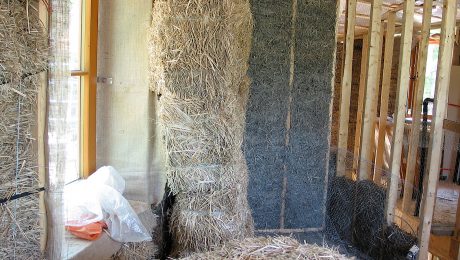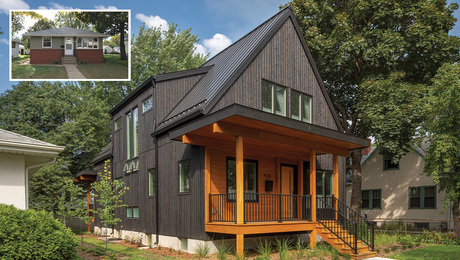The Standard of Enduring Work
A former remodeler describes how a lifetime of work in the building industry has led him to measure the quality of work by its long-term impact on the planet.
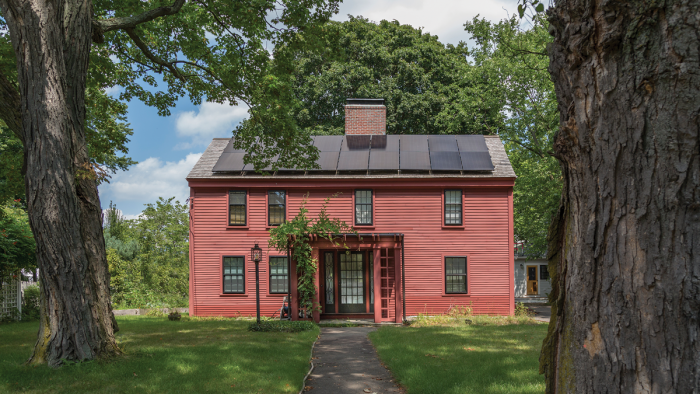
Early in my remodeling career, I assumed that if my work looked good on the day I finished and got paid, it was, by definition, quality work. But the longer I was in business, the more I realized that what looked good on the day I finished the job sometimes didn’t look so good a few years later. Now, after 40 years in the business, I believe that the only reliable way to evaluate quality is to finish the job, wait a few decades, and then decide. If your work holds up to that test, it has moved beyond good work to good stewardship.
In 1990, when a recession left my company with little work to do, we used the time to visit past projects and talk with former clients. Yes, it was an attempt to scare up new jobs, but more importantly it was a chance to study our past work and learn what did or didn’t hold up over time. We learned (or relearned) a lot of basic things. If an exterior end-grain butt joint lets water in more readily than it lets water out, it will rot quickly. If a joint doesn’t look good without caulk, it will soon look even worse with caulk. And with doors of any type, a little loose is better than a little tight.
My unsolicited return to past projects, which included some light repairs and touch-ups, turned out to be a powerful marketing strategy, which we continue to this day. But the marketing impact paled in comparison to how much we learned about the durability of our designs, materials, and construction details.
Looking more closely at how our own work stood up over time led me to question the sorts of things we were being hired to do, which often involved the need to strip away past errors before proceeding with new work. Sometimes it was an addition that was badly designed or badly built. Sometimes it was a toxic material, such as lead or asbestos, or a synthetic cladding that didn’t live up to its promise as a “forever” product. Sometimes it was the decision to finish off a basement or an attic without first really figuring out how to insulate the space properly. Sometimes it was a failure to reliably guide water away from places where it would do harm. In short, I saw a lot of work that I’m sure was what the then-homeowner wanted, but that had diminished rather than increased in value over time.
Learning from our own projects was an essential step for us, but our understanding of what holds up over time also relies heavily on the experience of others. And by that I mean the community of people who belong to the Northeast Sustainable Energy Association (NESEA) and who contribute to this magazine, to The Journal of Light Construction (JLC), and to Green Building Advisor. Other builders, architects, and engineers, who freely share their successes, failures, and knowledge, have allowed me to learn a lot more a lot faster.
All of this together is how I came to understand that quality construction establishes itself not at a point in time—for instance, when the punch list is complete or the final inspection signed off—but over the long haul. When evaluated over time, quality construction encompasses more and more criteria, expanding like ripples on the water after you throw in a stone. Obviously quality work must meet the needs of the homeowner who hired you at the time of completion and for years afterward. Beyond that, quality work should be easy for future homeowners and remodelers to maintain and modify, and not end up in the landfill all too soon—or worse, require special handling because of its toxicity. Even more broadly, it should acknowledge and enhance the neighborhood or community it’s a part of. Quality work should increase the skills and raise the standards of your crew and subs, and not require them to make a lot of compromises. Perhaps most broadly, quality work must be measured against its long-term impact on the planet, in particular its lifetime contribution to the carbon content of the atmosphere.
I realize that I’m defining a standard of performance that some will view as impossible to meet and even ridiculous to aspire to, but at this point in my career it is the only standard that interests me. I now see my role as more than simply providing a remodeling service to folks who want to change their homes. I see myself as a steward of America’s housing stock—one of many. And like a responsible forester who helps a logger know which trees to cut and when in order to preserve the forest, I want to preserve the investment we’ve already made in our existing houses. I want to work on them in a way that is sustainable and that adds value over time. Bad work doesn’t do that. Nor does ripping out a perfectly good kitchen every ten years simply because the house changed hands or because new trends emerged.
Stewardship means taking responsibility for all of the resources that others have entrusted us with—everything from the client’s money, to the resources embodied in the house we’re working on, to the time and talents of our crews, to the natural resources of the planet. Our responsibility is to organize and deploy these resources in a way that increases rather than diminishes their collective value over time. Although we focus our efforts on a particular house at a point in time, we hope that the value we add will extend well beyond the house, well beyond the project itself, and well beyond the present day.
As I write these words, I am 64 years old and imagining my 34-year-old self reading them. What could I say to that often arrogant but oh-so-eager-to-please younger contractor to convince him that the long-term interests of the homeowners, and even his own long-term interests, are not always best served by doing what the homeowners want? Sometimes they are better served by doing what the house needs. A recent letter to the editor (FHB issue #300), which my 34-year-old self could have written, called this a “misguided philosophy”—to believe that “the house is more important than the client’s wants, needs, and financial well-being.”
But as I mentioned before, we remodeling contractors often find ourselves undoing a fair amount of past remodeling work that’s in the way of our doing a good job for the current client or owner. These past errors are frequently the direct result of a decision at some point to prioritize the current owners’ wants, needs, and apparent financial well-being over all the other components of good stewardship that I’ve mentioned: the long-term needs of the house, its future owners, the community, and so on.
In my experience, most homeowners want to protect the value of, and their investment in, their home. When I explain my view of stewardship, that their house, and its subsequent occupants, are as much our clients as they are, most homeowners are willing to listen. In fact, since most of our clients come to us because of our company’s values, which they learned about from our website or from talking with other people who we have worked for, and because they share those values, most of our clients immediately get what we mean by stewardship. They are grateful for our approach and willing to rethink their priorities. Of course, not all of our potential clients see things our way.
One of the most important lessons I’ve learned in 40 years is that good stewardship is also determined as much by the work you decline as it is by the work you accept. In fact, the longer I’m in business as a residential remodeler, the fewer conflicts I feel between good stewardship, good client service, and good business. That’s because experience keeps teaching me all the ways that short-term thinking comes back to haunt me and others, and I become more confident and effective in advocating for good stewardship, which includes saying “no” when I think it’s needed.
A few years ago, a couple came to me with a project in mind. They were nearing retirement and wanted to build a large addition on the back of their Cape so that their out-of-town kids and grandkids would have a place to gather. The proposed addition would have overwhelmed the original house and would have created the largest structure in the neighborhood by a wide margin. It would have required a considerable percentage of their retirement funds.
I told them I thought it was a bad idea. I said they had a lovely house that was perfect for the neighborhood and that would require little or no work to remain so. There were several nice inns within an easy walk. The money they would spend on the addition could instead pay for any number of nights for relatives at the inns, any number of great family trips to wonderful places, and plenty more. In the meantime, their house would remain a well-designed, well-built, and relatively affordable home ready for the next owner. They thanked me for my advice and perspective, we shook hands, and we parted ways.
Some of you will think that what I said was irresponsible, even arrogant or condescending. Perhaps, but I don’t think so. I’ve thought about this moment often because it helped me come to this realization: in the world of design and construction, sometimes the best stewardship is doing nothing at all. Thirty years ago, that idea would have felt threatening to me. Now, looking back, I wish I had realized it sooner. I wish I had said “no” more often.
– Paul Eldrenkamp just sold his Boston-based remodeling company, Byggmeister, to his employees, and he now serves as a small-business coach and consultant with Helm Construction Solutions.
From Fine Homebuilding #302
RELATED LINKS



